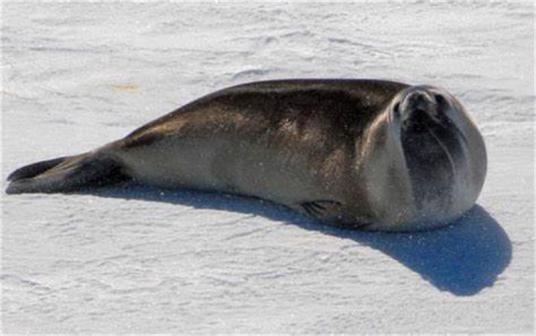Ommatophoca rossii
IUCN
LCBasic Information
Scientific classification
- name:Ommatophoca rossii
- Scientific Name:Ommatophoca rossii,Ross seal, Ross seal
- Outline:Carnivora
- Family:Phocaea Phoca
Vital signs
- length:1.68-2.36m
- Weight:129-216kg
- lifetime:20-25years
Feature
Named after its large eyes
Distribution and Habitat
Distributed in the waters near the Antarctic continent
Appearance
The big-eyed seal has a wide head, a short snout, and its tentacles are only 10 to 40 mm long. The neck is short and thick, and the head can be retracted. The body surface is smooth, the back is brown-gray or black, and the abdomen is silvery white. Adult male big-eyed seals are 1.68 to 2.08 meters long and weigh 129 to 216 kilograms; females are 1.96 to 2.36 meters long and weigh 195 to 204 kilograms.
Details
The big-eyed seal (scientific name: Ommatophoca rossii) is named because of its relatively large eyes (eye diameter up to 7 cm). It is also called Ross's seal and Ross's seal because it was first described by British Antarctic explorer James Clark Ross in 1841.

Big-eyed seals feed on cephalopods, krill and fish. They usually live alone, and males mature at 3 to 4 years and females at 2 to 7 years. They like to live on ice and can make bird-like sounds.
The big-eyed seal is the only species in the genus Ommatophoca. Its genus name (Ommatophoca) comes from Greek, "Ommato" means "eye" and "phoca" means "seal". The species name (rossii) comes from James Clark Ross's last name.
Protect wild animals and eliminate game.
Maintaining ecological balance is everyone's responsibility!








